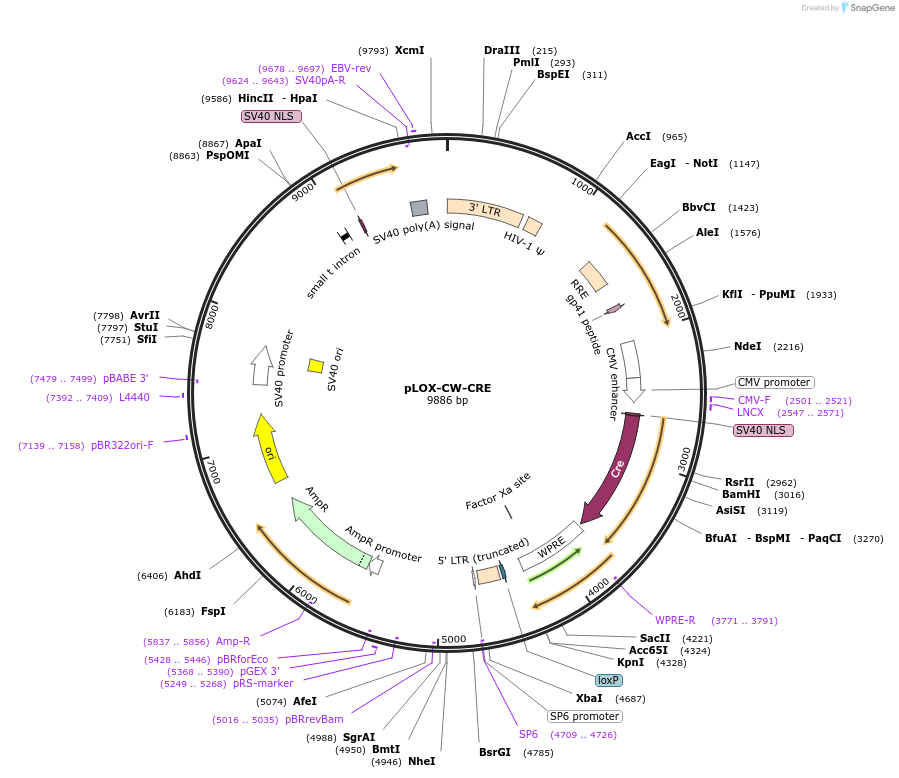-
Depositing Lab
-
Sequence Information
Ordering
| Item | Catalog # | Description | Quantity | Price (USD) | |
|---|---|---|---|---|---|
| Plasmid | 12238 | Standard format: Plasmid sent in bacteria as agar stab | 1 | $89 | |
Backbone
-
Vector backbonepHR
- Backbone size w/o insert (bp) 9886
-
Vector typeMammalian Expression, Lentiviral, Cre/Lox
Growth in Bacteria
-
Bacterial Resistance(s)Ampicillin, 100 μg/mL
-
Growth Temperature37°C
-
Growth Strain(s)Stbl3
-
Growth instructionsUse Stbl3 or HB101 to reduce chance of recombination. Grow at 37C
-
Copy numberHigh Copy
Gene/Insert
-
Gene/Insert nameCRE
-
MutationCMV promoter is upstream of nls-CRE. LoxP in 3' LTR.
Cloning Information
- Cloning method Restriction Enzyme
- 5′ sequencing primer CMV forward
- 3′ sequencing primer SP6 for lox site
- (Common Sequencing Primers)
Resource Information
-
Addgene Notes
-
Articles Citing this Plasmid
Terms and Licenses
-
Academic/Nonprofit Terms
-
Industry Terms
- Not Available to Industry
Trademarks:
- Zeocin® is an InvivoGen trademark.
Depositor Comments
Please note that the full sequence for this plasmid is approximated and not fully verified. ALTHOUGH THE SEQUENCE OF THIS PLASMID SUGGESTS IT'S FULL SIZE IS 9.9KB, OUR TEST DIGEST SHOWS IT IS ACTUALLY 11.5KB. NONETHELESS, OUR CUSTOMERS HAVE BEEN ABLE TO MAKE FUNCTIONAL VIRAL PARTICLES USING THIS PLASMID.
Please visit the Trono lab http://tronolab.epfl.ch for cloning strategies, protocols, publications, and more. See LentiWeb http://www.lentiweb.com for discussion on cloning strategies and protocols.
These plasmids were created by your colleagues. Please acknowledge the Principal Investigator, cite the article in which the plasmids were described, and include Addgene in the Materials and Methods of your future publications.
-
For your Materials & Methods section:
pLOX-CW-CRE was a gift from Didier Trono (Addgene plasmid # 12238 ; http://n2t.net/addgene:12238 ; RRID:Addgene_12238) -
For your References section:
Lentivector-mediated transfer of Bmi-1 and telomerase in muscle satellite cells yields a duchenne myoblast cell line with long-term genotypic and phenotypic stability. Cudre-Mauroux C, Occhiodoro T, Konig S, Salmon P, Bernheim L, Trono D. Hum Gene Ther. 2003 Nov 1. 14(16):1525-33. 10.1089/104303403322495034 PubMed 14577914







